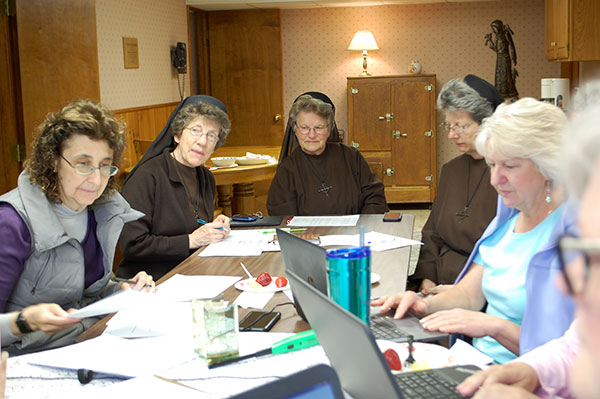Table of Content
This in and out strategy is the true help families need to a help support philosophical and psychological needs. The details are important in the home environment to develop a better understanding of the patients’ needs to promote a comfortable life. The good news is that every hospice care plan is personalized to match the unique preferences and requests from the patient and family.

In most cases, an interdisciplinary health care team manages hospice care. This means there are many health care professionals involved in helping to manage the patient's care, based on each patient's needs and preferences. Typically, the hospice doctor or medical director is in charge of the patient's care, though the cancer doctor and/or primary care doctor can be involved, too. There will be regular reports, as well as family and care team meetings to evaluate the patient's status to be sure all the patient's needs are being addressed.
The hospice team
Trained bereavement counselors offer support and guidance after the death of a loved one in hospice. Chaplains, priests, lay ministers or other spiritual counselors can provide spiritual care and guidance for the entire family. Home health aides can provide extra support for routine care, such as dressing, bathing and eating. Brain tumor, breast cancer, colon cancer, congenital heart disease, heart arrhythmia. Celeste Yarnall operates a holistic consulting practice for people and their pets specializing in feline and canine nutrition. Although based in Southern California, Celeste consults with clients from all over the world.
Aspire is a team of caring professionals committed to providing patients with the highest quality of home health and hospice services. You sign a statement choosing hospice care instead of other Medicare-covered treatments for your terminal illness and related conditions. The essence of hospice care is enjoying the remainder of life as comfortably as possible can that be attainable at home, can hospice care be provided at home.
Differentiating Comfort Care from Palliative Care
What is the difference between hospice care and palliative care? Palliative care and hospice are synonyms to many and have been used interchangeably. Palliative care is the care provided to patients who have not ended preventive care and may still be on the treatment by traditional means while receiving some of the hospice benefits. Most Hospice agencies, prefer to have patients in hospice care instead of palliative to fully utilize the benefits of hospice programs. Palliative care is considered the intermediate treatment or the transition care but however, most providers place patients in hospice care to utilize the full program.

When someone enters into hospice care, they are asked to pick someone to be their primary caregiver. The primary caregiver works with the hospice team and patient to develop a care plan based on the patient's specific needs and preferences. The primary caregiver continues to be the main person to help make decisions for the patient throughout the length of hospice care. Medicare says hospice benefits can include home health aides and homemaker services. Medicare data reveals that, on average, a nurse or aide is only in the patient's home 30 minutes, or so, per day. Still, when it comes to where we die, the U.S. has reached a tipping point.
Have Questions About Hospice?
Duke University published a study in 2007 that concluded hospice services save money for Medicare and bring quality care to patients and families. Over the years, the focus and appreciation of end-of-life care, quality and dignity has continued to grow. First and foremost let us have an understanding of what is hospice care is before we compare and contrast palliative care. The essence of hospice is the end of treatment by regular means and opting to be in the hospice philosophy of electing comfort versus traditional means.
This theory, according to this theory, is supported by the fact that the pet loses consciousness and that the heart and lungs cease to function in a matter of minutes. Dr. Katie Grzyb, DVM, explains what you should expect when you put down your pet. What’s the process of pet euthanasia, and how do you deal with the grief afterwards? Every pet owner reacts in slightly different ways to the situation. You will be briefed on the process of euthanasia by most veterinarians before receiving it. Please consult with your veterinarian if you are uncomfortable discussing this with your pet or on the day of the procedure.
In routine care, besides basic nursing protocol nurses asses the patient’s pain level and if any change of patient conditions has occurred will be monitored to transition the care under levels. Other levels of care consists of general inpatient care or continuous care. Continuous care is implemented when the patient’s condition worsens and 24-hour supervision is needed to stabilize the patient’s condition. General inpatient care is implemented when patients are at nursing facilities. The hospice staff similar to continuous care must monitor the patient to stabilize the condition. Hospice care is end of life care that focuses on the home health and comfort of the patient in their last few months of life.
Collaboration of information and the common goal for the hospice team to communicate across team members achieved via encrypted mobile application. Further, the willingness of the hospice team and ability to mobilize has bridged these problems. While being at patients home nurses have access to vast inventory of medications. Advancements in software allows the hospice team to input patient information on the field having access to information about the patients case at hand. These changes in technology allows mobile ordering of supplies and coordination with the hospice team.
Make sure your pet is not in pain or in distress so they do not suffer. Because your pet may spend a lot of time lying on their back, make sure the bed they sleep in is comfortable and well-cushioned to avoid pressure sores. Pets have a number of options for pain management, including prescription and over-the-counter pain medications, diet changes, and exercise. Hospice care for your pet aims to make it as comfortable as possible in its final days. It is critical to discuss the decision with your veterinarian in each case. Hospice may be the best option if your pet has a terminal illness.
"It's ironically called the 'comfort care kit' that you get with home hospice. They include suppositories, and so I had to do that," she says. "That was the lowest point. And I'm sure it was the lowest point for my mother as well. And it didn't work." She ended up writing an essay about her frustrations with the way hospice care often works in the U.S. At Hospice Wise, we realize that a lot of people don’t know about hospice or its range of services. This may be through assisting with funeral arrangements and paperwork, providing bereavement care and helping the family find grief support groups in their area.

No comments:
Post a Comment